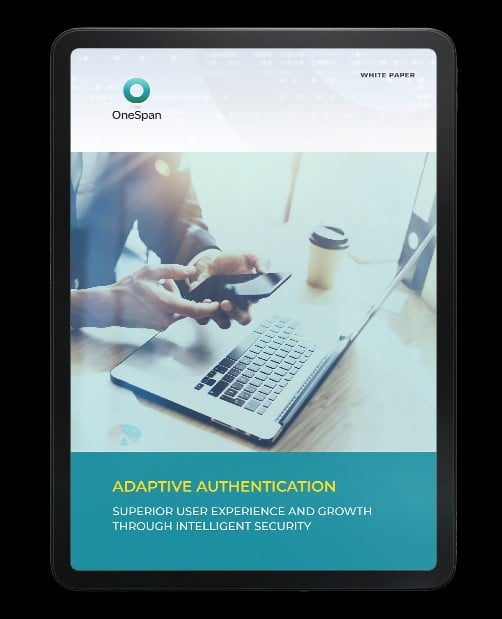Four Technologies Disrupting Banking

The financial services industry is experiencing an unprecedented wave of disruptive innovation, such as blockchain technology, automation, digital banking, regulatory changes, cloud computing, and open banking. What's more, this digital disruption to the financial sector has only accelerated during the COVID-19 pandemic and sent fintech startups, incumbent banks, tech companies, and other financial service providers scrambling to create a competitive advantage with digital technology and address customer needs. As people around the world stayed home and avoided public places, banks rushed to digitize both their back-office processes and customer-facing services in order to keep important financial transactions happening. As a result, four key technologies have emerged that are transforming financial products, financial markets, and the banking industry as we know it:
Mobile: Generating Vast New Volumes Of Data
Before the pandemic, the financial services industry was working hard to increase the adoption of their mobile channels. Many banks had mobile apps, and millennials comprised a large portion of the market share of these new markets. But few were taking full advantage of everything the mobile channel offers. That all changed when the pandemic hit and banks were forced to quickly transition to a mobile-first business model. Today, there are nearly 170 million mobile banking users in the U.S. By leveraging the mobile channel to its full potential, financial institutions have access to much more data than ever before, which they can use to better identify and stop cyberattacks and fraud attempts in real time.
In the mobile ecosystem, retail banks can gather real-time data on not only customers and transactions, but also about their behaviors, environment, location, biometrics and more. They can even use the phone’s Bluetooth to discover other connected devices within the customer’s proximity. All this data enables banks to gain deeper insights about their customers and meaningful context surrounding situations, which is very valuable for risk management. For example, a bank can learn exactly where the transaction is taking place — in the customer’s home, or perhaps from a suspicious location like a foreign country. Using the vast new volume of data made available by mobile, banks can better understand each session and transaction in real time, enabling them to stop fraud before it hits the customer's bank account or credit cards — something that was virtually impossible before.
Artificial Intelligence (AI): Discerning The Signal From The Noise
Until recently, most financial institutions and lenders had user data living in numerous, siloed databases, which made gathering meaningful intelligence a tedious and time-consuming process. As the volume of data has increased, banks have started adopting fintech innovation with AI and machine learning (ML) technologies to perform real-time analysis of big data at a great scale. More than 75% of large banks today are pursuing AI strategies.
In the past, banks relied on manually examining transactional data to identify fraud. Now that the volume of data has become so large, it’s impossible to do it manually. Instead, sophisticated AI and ML technology solutions are used to fully automate workflows driven by accurate risk scores. This significantly reduces the number of cases that drop out for manual review by fraud teams. These disruptors enable fraud teams to be nimbler and identify fraud more quickly. The true potential of AI and ML in banking is just beginning to be realized. Today, most banks are using these technologies to simply identify potential fraud and score risk. Soon, they will leverage AI and ML to automatically respond to and reconcile fraud for faster resolution for customers.
Blockchain: Enabling Self-Sovereign Identities
Blockchain, or distributed ledger technology, has the potential to radically change who has control over our personally identifiable information (PII) and make financial institutions — and online transactions — much more trustworthy.
A disruptive technology like blockchain can help prove a person’s identity, allowing consumers to create a verified, digital identity they can use with any online institution. By leveraging public key cryptography and referencing a person’s verified credentials on a trustworthy, shared log (the distributed ledger), blockchain can help give people control over their digital identity credentials. Consumers could keep their identity credentials safe and use them as cryptographic evidence whenever their bank or another online business needs to verify their identity. They could also revoke access at any time.
A blockchain infrastructure across the internet would give consumers a portable identity to use in digital channels and true control over their PII disclosure. This can help stop fraudulent payment transactions. Currently, if a transaction is disputed as fraud, there are few ways for a business to prove it is legitimate, which results in billions of dollars in losses annually due to chargebacks. If consumers each had verified digital identities, all secured on a trusted blockchain, banks and other businesses could prove who conducted the transaction and vastly reduce chargebacks.
A widescale blockchain infrastructure has been slow to find acceptance, but with the fast-growing popularity of cryptocurrencies, blockchain will soon become more mainstream. Today, 70% of banks worldwide are experimenting with permissioned blockchain.
Digital Identity Verification: Ending Identity Fraud
Surprisingly, even in today’s digital age, 51% of North American banks still require a person to visit a bank branch to verify their identity when opening a new account. Just 16% use the types of new technologies that enable a secure and fully digital account-opening process. However, this is changing rapidly. Today, using next-generation identity verification technologies like biometrics and facial comparison, a person’s identity can be positively verified in both digital channels and in-person interactions. By using a mobile device, consumers can scan their ID and take a video or selfie with liveness detection to prove they are the person pictured on the ID.
Digital identity verification is making it possible for banks to continue to operate during the pandemic and the future by enabling a faster, more convenient, and completely digital way to open new accounts while also putting an end to application fraud in financial services.
The traditional banking industry has made tremendous strides in digital transformation over the past year thanks to mobile, AI, blockchain and digital identity verification. However, there are still many more untapped opportunities for banks to leverage these technologies to streamline banking services and better compete. Whether in financial services or other industries, these technologies will enable businesses to deliver a better customer experience and increased customer satisfaction, put an end to online fraud, provide consumers with greater control over their sensitive data and help us all protect our identities online.
This blog, written by Will LaSala, Senior Director of Security Solutions at OneSpan, was first published in Forbes on May 7, 2021.









